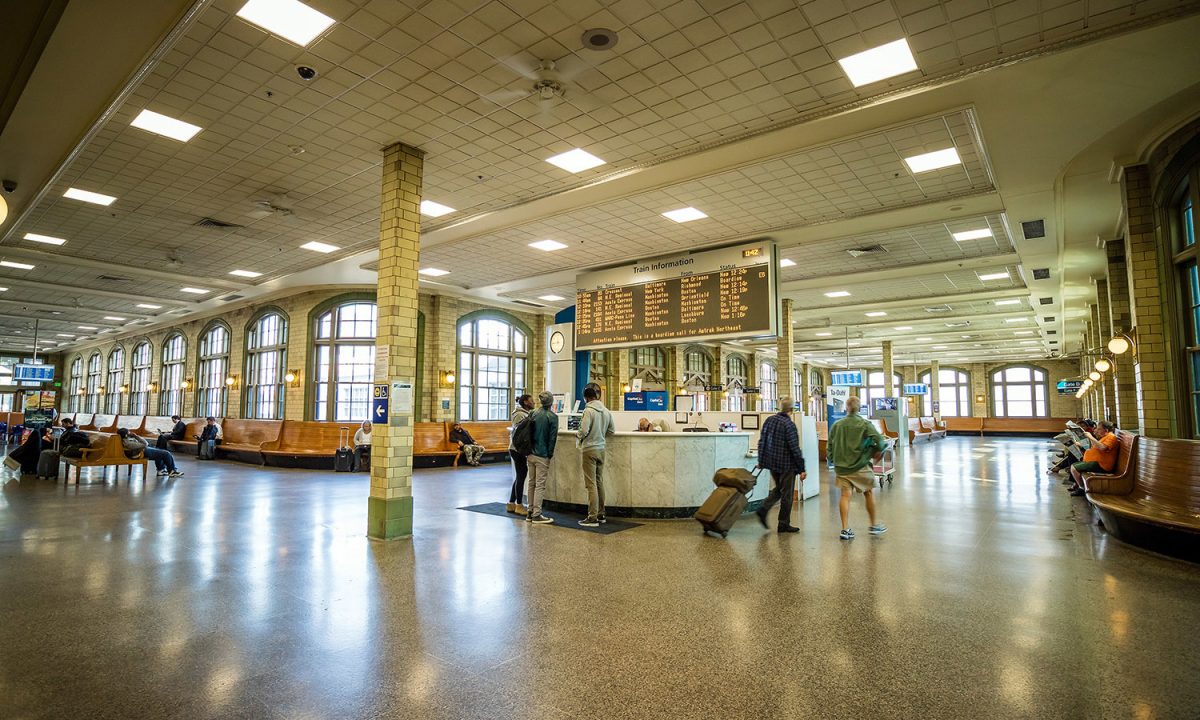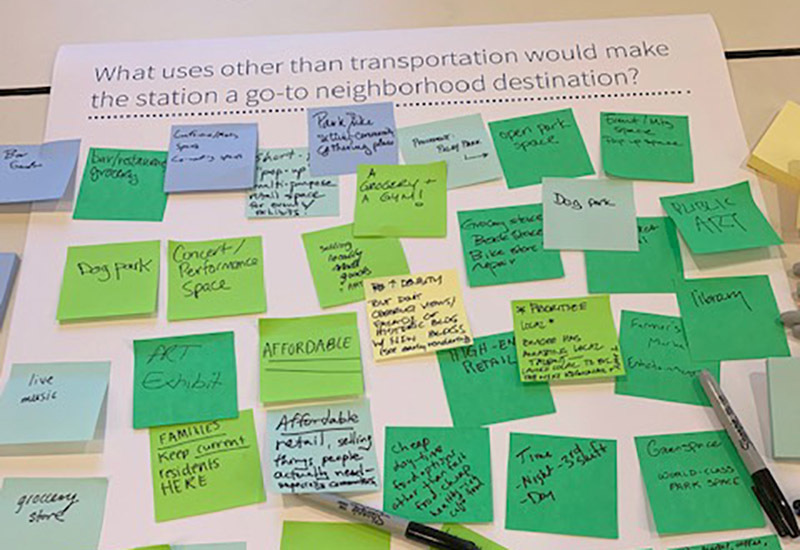
Citing a pledged $90 million in funding from Amtrak and public support from Rep. Elijah E. Cummings, developers with Beatty Development Group, Cross Street Partners, and Penn Station Partners presented their vision for transforming the area surrounding Penn Station and Station North at a public meeting Tuesday.
As the eighth busiest station in the Amtrak system, developers see the area as an increasingly vibrant one that deserves the type of amenities on par with the attention and foot traffic it’s getting. The pledge from Amtrak will be used to add new platforms for riders as well as retail and restaurant space. No tenants have been announced, but the hope is to keep things local. Another top priority is maintaining the integrity of the building and preserving its history, while also implementing long-clamored-for upgrades.
“When you think about adaptive reuse projects, you can really create a strong sense of place and ambience,” says John Renner, Cross Street Partners’ vice president of development. “That would be really cool.”
Developers gave an update on their progress since the first public information session last year used to gather community input. Plans announced include a new connection from Lanvale Street to the south of the station, concourses, and additional buildings located on surrounding parking lots that have been neglected. If things go as planned, this type of growth could stimulate new residential and office space as the area becomes more attractive and frequented.
They cautioned, though, that there is still an estimated $400 to $600 million of funding that will be needed to fulfill this vision. That will be achieved through grants, Opportunity Zone Funding, and tax credits. Bill Struever of Cross Street Partners noted that a project like this will require a local, state, and federal effort. “We want to maximize opportunities in Station North,” Struever says.
Throughout the presentation, speakers used Denver’s Union Station as an example. It underwent a massive transformation itself, turning into a food hall and a gathering hub for those in the city—buttressed by $500 million at the city, state, and federal levels. However, Baltimore runs far more trains. In fact, the impetus for the Amtrak money is an increase in train service throughout the northeast corridor. Essentially, where the focus in Denver was less centered on the transportation aspect by nature, plans in Baltimore are more holistic.
“Station North is full of activity,” Struever says. “It just doesn’t have a lot of places yet. We want to really take advantage and build the ecosystem here.”
There is obvious interest from Batlimoreans when it comes to what the finished product will end up looking like—should this vision be fulfilled. The meeting was at full capacity, and attendees were encouraged to leave notes with suggestions for things they’d like to see that would keep them coming back.

“Right now the streetscape is not very inviting,” says Ryan McAlpine, a transportation planner and Remington resident who’s lived in Baltimore for 11 years. “It doesn’t really lend itself to people wanting to spend time there. There are things that could be done to reverse that.”
McAlpine says he is encouraged by what was discussed Tuesday, but that there is still a lot of work to do. This is not a project that will be fully realized next year or the year after—rather, this meeting, and a subsequent one set to be held in late fall, will establish just how and when concrete action can begin to move forward.
“This is going to be huge for this city,” Struever says. “There’s all this great stuff happening around us and we’re really there to help knit it together, build, and make it great.”